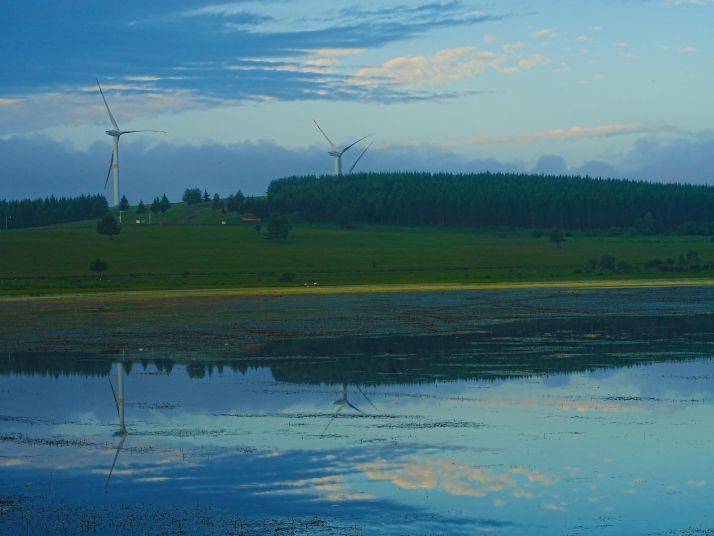| Lifestyle |
| When destination turns revelation | |
|
|
 The Saihanba National Nature Reserve in Hebei Province on July 26 (XINHUA)
When I was invited to participate in a foreign experts' tour of Hebei Province, north China, I was curious and excited to discover new perspectives on China. As a Mexican living in China since 2015, I have visited several provinces. However, I must confess that this was my first time in Hebei, and it was an unforgettable journey that filled my heart with happiness and inspiration. Over the course of five days, we experienced the richness of Hebei, which offers a fascinating blend of history, culture, natural beauty and modernity. Our first destination was Chengde, a city with a rich history and impressive natural surroundings. I was impressed by the Chengde Mountain Resort, surrounded by spectacular mountain scenery that provides a serene escape from the urban bustle; this place not only offers panoramic views and hiking opportunities but is also dotted with ancient temples and pagodas that further enrich the experience. The next destination of our journey was the Saihanba National Forest Park, a truly mesmerizing place. Saihanba is an awe-inspiring example of ecological restoration and environmental stewardship. The story behind Saihanba is a testament to human perseverance and ingenuity. The local communities, including thousands of dedicated workers and researchers, have played a central role in this environmental success story. Their efforts in planting trees, combating soil erosion and nurturing the land showcase a powerful blend of dedication and creativity. The tangible benefits of the forest's restoration, including improved air quality, increased biodiversity and a more stable climate, underscore the importance of large-scale environmental initiatives. It was impressive to observe how such efforts can profoundly and positively impact the surrounding environment and local communities. Also, this natural reserve is an extraordinary example of China's current green and sustainable development drive. I cannot fail to mention our visit to Xiongan New Area, an innovative, green, intelligent and world-class city with the potential to become a model for a new type of urbanization in China—and the world at large. I was very impressed by the progress in building modern transport infrastructure, including metro and high-speed rail lines and efficient energy and water systems. I must also acknowledge that planning is the focal point of the development of this new city, focused on integrated and long-term growth, with a strong focus on sustainability and quality of life. The scale and ambition of Xiongan's development are striking. This grand vision demonstrates China's commitment to addressing urbanization challenges and creating a benchmark for modern urban planning. Xiongan's emphasis on incorporating cutting-edge technologies and sustainable practices is impressive. The development plan includes smart infrastructure, green energy solutions and eco-friendly urban design. This focus reflects China's forward-thinking approach to balancing technological advancement with environmental responsibility. The integration of innovative technologies in Xiongan is remarkable. The use of technologies such as the Internet of Things, AI and smart grids is set to improve the city's efficiency and quality of life. These technological advancements are central to Xiongan's vision and promise to transform how urban resources are managed and services are provided. Xiongan offers a unique case study in urban development and smart city planning. It is a real-world example of how large-scale projects are approached and executed, providing valuable lessons for urban planners, developers and policymakers worldwide. Xiongan New Area stands out as a bold and innovative project with the potential to influence future urban development globally. Xiongan is set to be a hub for innovation, which can offer significant opportunities for startups and tech companies. Government support and a focus on research and development can foster a pulsating ecosystem that drives new ideas and technologies. Despite these advances, challenges remain. Implementing advanced technologies and building an entirely new city involve issues such as resource management, system integration and adapting to residents' changing needs. However, I am confident that Xiongan possesses both the adaptive capacity and leadership necessary to overcome these challenges—qualities that will prove vital to its long-term success. The author is a Mexican lecturer at the University of International Business and Economics in Beijing Copyedited by Elsbeth van Paridon Comments to yanwei@cicgamericas.com |
|
||||||||||||||||||||||||||||||
|